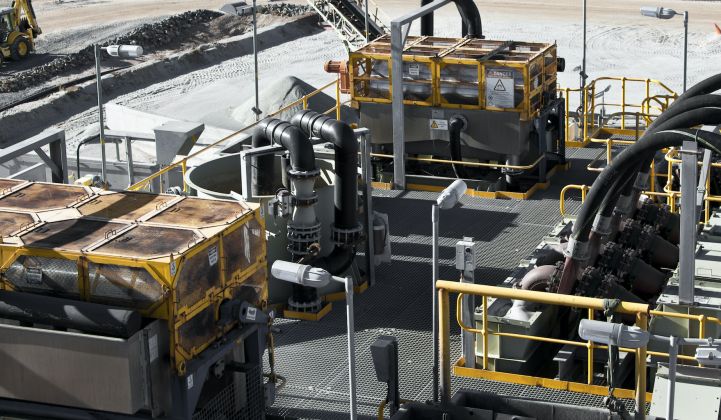Lithium, cobalt and nickel are experiencing price fluctuations as global tech and auto giants race to lock down these crucial battery materials.
All three metals were rising in price through the early part of 2018, according to the latest research from Wood Mackenzie's newly launched Battery Raw Materials Service. The data charts out ups and downs in those metal prices over the next five years, which will play an increasingly significant role in the cost structure for advanced batteries.
The analysts expect lithium demand to grow by approximately 42 percent between 2017 and 2020, prompting an expansion of materials supply. But, they note, there’s a lag time between expanding raw metals production and churning out battery-grade materials.
“As such, we expect relatively high [lithium] price levels to be maintained over 2018," the report states. "However, for 2019 and beyond, supply will start to outpace demand more aggressively and price levels will decline in turn.”
The report predicts a steady decline in lithium prices, along with increased supply, amounting to a compound annual growth rate of -18 percent for lithium carbonate between 2017 and 2022.
Cobalt is another story. Its price more than doubled from 2016 to 2017, and prices in February were up 133 percent year-over-year.
Even that run will be short-lived, though, peaking out at $70,548 per ton in 2018 before declining in the following two years, holding steady in 2021 and rising again in 2022.
Battery production drove 49 percent of cobalt demand in 2017, and will drive 61 percent in 2022, Wood Mac predicts. Battery demand for cobalt in that year will be just six kilotons short of the total cobalt demand in 2017.
A significant surplus will build up from 2019 onward, driving the reduction in price. However, a short-term price increase is likely, driven by regulatory uncertainty in the Democratic Republic of the Congo, which supplied 64 percent of global cobalt production last year.
The DRC parliament passed a mining sector reform last month that would increase royalties on cobalt, copper and gold, and levy a 50 percent tax on “super profits,” defined as prices that exceed 25 percent of the project’s feasibility-study projections. That means more of the proceeds from mining stay in the Congo, but that could result in uncertainty or higher prices downstream.
“While the new code still has to be signed into law by President Joseph Kabila, the new reforms highlight the inherent risk in the cobalt industry's reliance on DRC supply,” the report notes.
The battery industry avidly consumes nickel as well, although it represents a much smaller share of that market compared to cobalt. Still, Wood Mac expects nickel demand for electric vehicles and energy storage to more than double between 2016 and 2020.
That metal reached a new high of $14,125 per ton on February 15. After a high annual price this year, the analysts predict a decline in 2019 followed by steady annual price growth that puts 2022 at nearly double the 2017 price.
Demand from the battery sector has already prompted some Western producers to shift output away from the traditional briquettes and toward the powders and sulfates useful for battery manufacturing.
The research suggests that electric vehicles and energy storage, though tiny players now in their respective markets, are already influencing the markets for their core commodities. That influence will only increase as the major global automakers scale up EV production in earnest.
Volkswagen this week allocated $25 billion for battery equipment as it tries to increase its EV-producing plants from three to 16 by the end of 2022. The company plans to source the batteries from LG Chem, Samsung and Chinese battery maker Contemporary Amperex Technology Co Ltd.
Volkswagen will have to compete with major EV commitments from Volvo and Renault-Nissan-Mitsubishi, not to mention Tesla’s uniformly electric vision.
The Wood Mac analysis also flags potential supply bottlenecks, most notably the reliance on the DRC for the bulk of cobalt production.
It’s possible that future materials price spikes will thwart the steady battery price declines that the industry has gotten used to.
That risk already drives innovation around alternative lithium-ion chemistries and different storage technologies, as well as new business strategies.
Apple, which relies on cobalt for its iPhone batteries, has entered talks to buy cobalt from miners in a long-term contract, Bloomberg reported. The tech giant doesn’t want to let its signature product suffer from an EV-initiated cobalt shortage.




